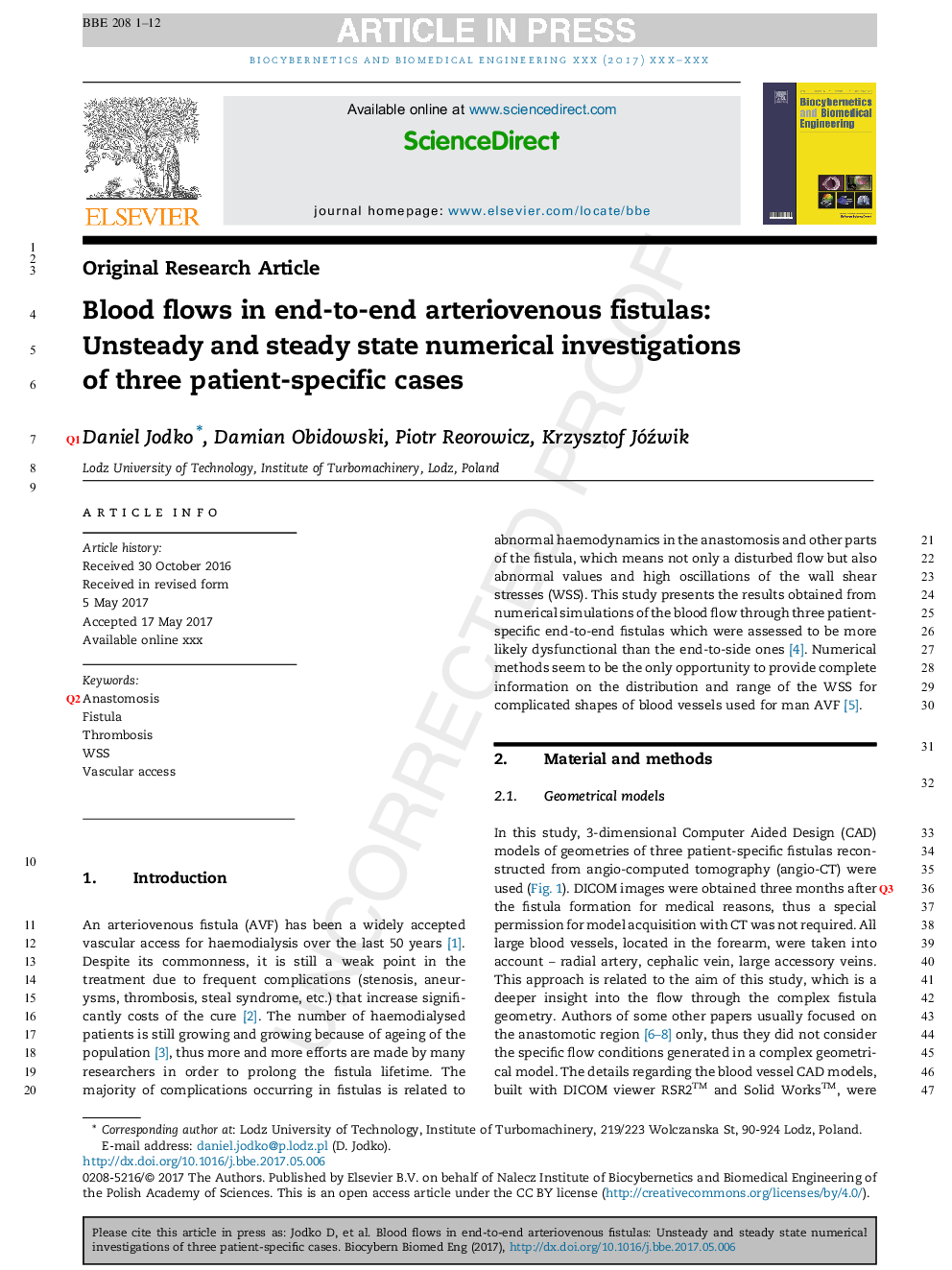| Article ID | Journal | Published Year | Pages | File Type |
|---|---|---|---|---|
| 6484221 | Biocybernetics and Biomedical Engineering | 2017 | 12 Pages |
Abstract
The arterio-venous fistula is a widely accepted vascular access for haemodialysis - a treatment for the end-stage renal disease. However, a significant number of complications (stenoses, thromboses, aneurysms) of fistulas can occur, which are related to the geometry of the anastomosis and the local abnormal hemodynamics. Local flow conditions, in particular the wall shear stress (WSS), are thought to affect sensitive endothelial cells on the inner vessel wall, which leads to intimal hyperplasia. This study presents the results obtained from numerical simulations of the blood flow through three patient-specific end-to-end fistulas which were assessed to be more likely dysfunctional than the end-to side ones. Unsteady and comparative steady-state simulations of blood flow were performed in ANSYS CFX. The obtained results show behaviour of the blood, velocity fields, shear strain, vorticity range, blood viscosity changes, a WSS distribution on vessel walls and give information about the flow rate in the veins receiving blood from fistulas. Blood flow animations are attached to the online version of the paper. Numerical methods seem to be the only opportunity to provide complete information on the distribution and range of the WSS for complicated shapes of blood vessels used to fistula creation, however the WSS is strongly dependent on the local geometry and mesh quality. High values of the shear strain, associated with elevated values of shear stress, found in each model, could increase a risk of haemolysis. High shear environment with raised vorticity can result in activation of platelets and further platelet aggregation and thrombosis.
Related Topics
Physical Sciences and Engineering
Chemical Engineering
Bioengineering
Authors
Daniel Jodko, Damian Obidowski, Piotr Reorowicz, Krzysztof Jóźwik,
